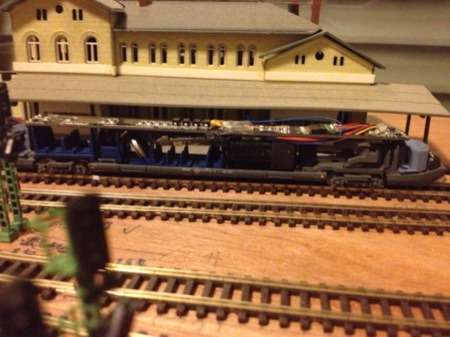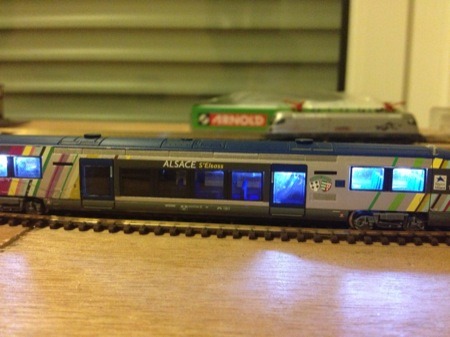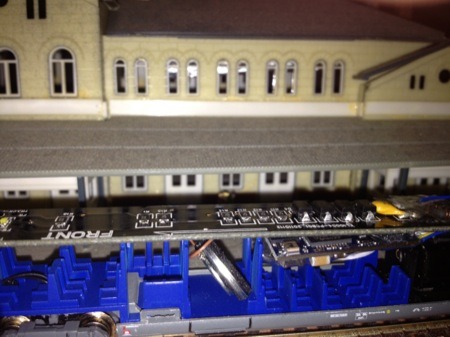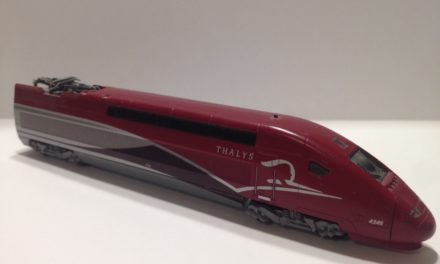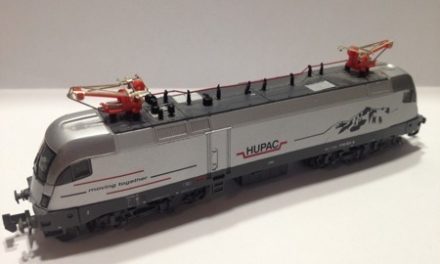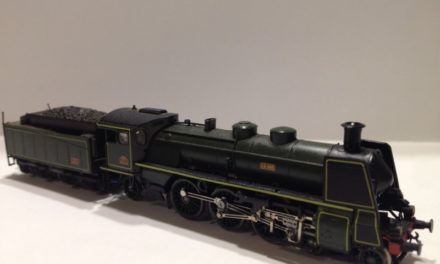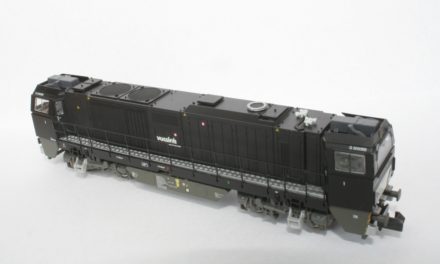I always found those diesel railcars original, and when Arnold released them in different liveries (both versions in service in Germany and France), it was a good occasion to finally add something French to my collection.
This Arnold HN2101 X73900 is a nice little unit, and is even better with a sound decoder !
The original
These railcars are built by Alstom, and run mainly in France & Germany, operated by the French SNCF, and the German DB.
In both countries, its particular form factor earned him the nickname “Whale” (“Baleine” or “Walfisch“). Some units are equipped to run in the two countries for local cross-border services.

This particular model belongs to the SNCF, and is used on lines between the French sub-region (“département”) of Alsace (Region of “Alsace-Lorraine”), and Germany. This is a region-specific design, emphasized by the “Alsace” prominently written. One should note as well that Alsace has belonged to France and Germany alternatively since 1870. Alsatians are proud of their German dialect, and the SNCF have indulged them by adding the region name in original Alsatian (“S’Elsass”).
The model
The Arnold HN2101 model is well detailed, has internal lighting, as well as red/white headlights on both sides. If you want to see more details about it, I suggest the quick review on the Quinntopia blog, which also shows a video: http://quinntopia.blogspot.com/2012/09/locomotive-roster-sncf-x73900-arnold.html
Adding sound
The model is equipped with a NEM 651 standard socket for N decoders, but is not natively sound-friendly.
Thanks to the modern internal design though, it won’t be too much of a problem. The electronic board is “hanging” at the ceiling level of the model, hidden by the roof, leaving the interior of the model visible through the windows.
Room for the decoder
I will be using, as usual, an ESU Loksound Micro V4.0 decoder. Unfortunately, it is slightly too thick to fit between the electronic board and the plastic ceiling. I had to install it under the board, which means blocking one of the interior lighting LEDs. I simply applied a tiny bit of heat glue to stick the decoder to the board, so that it doesn’t float in the cabin.
I may change that in the future (maybe adding a led of my own, to replace the one I obstructed). But for now, I am willing to trade part of the interior lighting for sound.
Connection to board
Fortunately, the board is empty at the location where the NEM 651 decoder should be. I have used this “hole” to simply pass the coder cables through: it fits perfectly, without even touching the motor rotor.
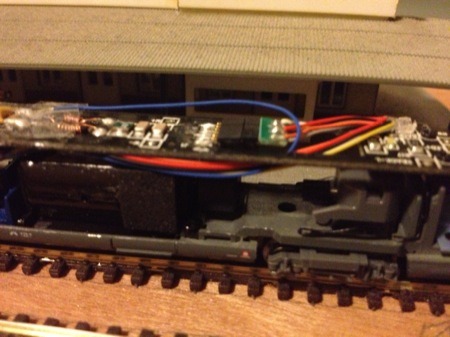
The NEM connection of the decoder. The factory default cables are a maybe 1 cm too long, but that’s not a problem.
The loundspeaker
I will be using a 8Ω speaker from ESU, reference 50328. It fits vertically in the area that should be the door area of the model.
Originally, I wanted to install a decoder with a resonance chamber from Zimo, I have had some good experience with them. But I didn’t have one at hand and wanted to play immediately 😉
So I added the speaker, as is, and closed my model. I was hoping somehow the casing would be acting as a good enough resonance chamber. This is something a real DCC sound expert would find appalling, but after testing, I realized it worked even better than I expected. I am never looking for my sound installs to be loud and powerful, and at the sound level I wanted, the result is perfect.
Programming and testing
I used the ESU LokProgrammer to setup my decoder. It has now become routine, and I was quickly able to play with adding sounds of my own. I specifically want all my models to have a consistent list of basic sounds (arrival and departure announcement for example).
I was delighted to see that ESU provides a standard cross-border announcement in its free “Sound Template Pack”. It is an announcement for a Lorraine train (close enough for me), made in French, English and German; exactly as it is in French stations for trains heading for Germany.
Make sure to watch the short video at the beginning of the article to hear the final result.
How would you have done it? Do you have tips to avoid blocking the interior lighting leds? Do you always use resonance chambers for the speakers in your N installations? Don’t hesitate to comment!
Decoder install disclaimer:
I am a hobbyist, my installs are for information only, as I am still "learning by doing". If you are afraid to damage your vehicle, or expensive DCC decoders, leave your DCC conversions to a professional Model Railroad expert!

